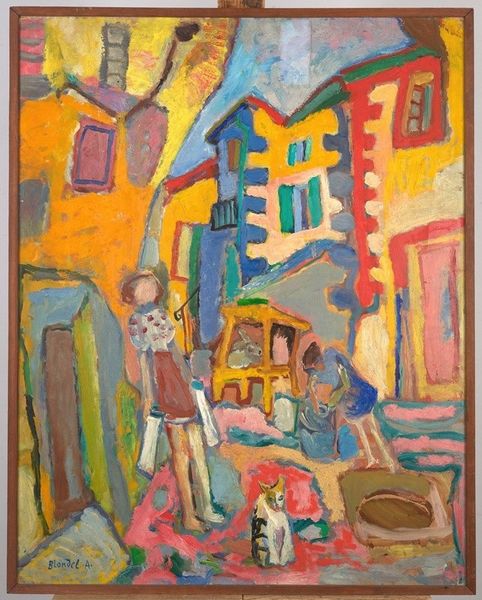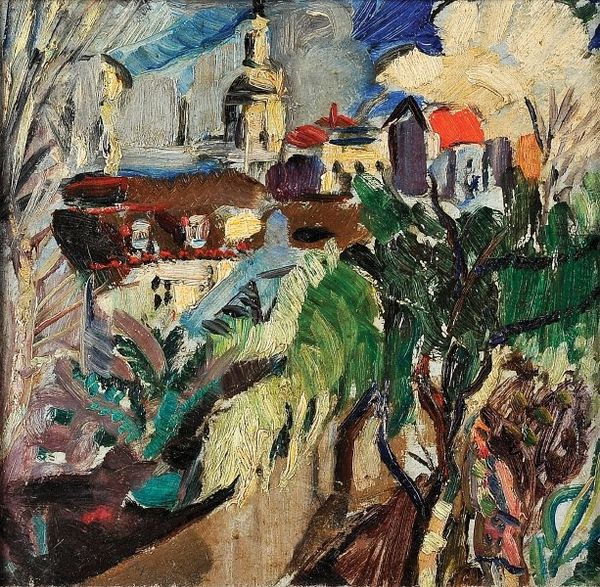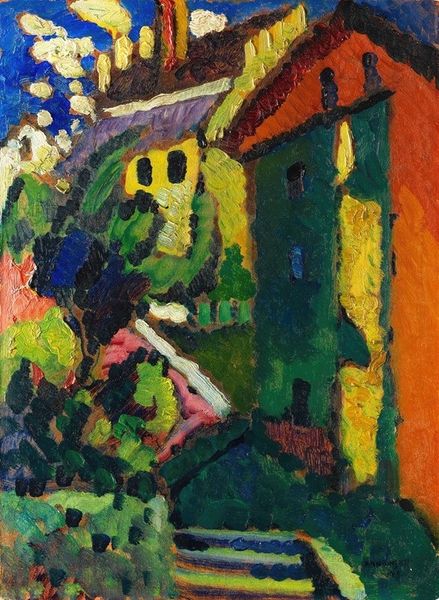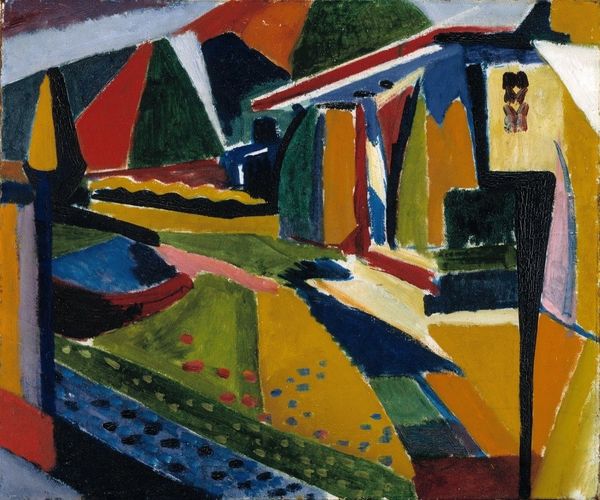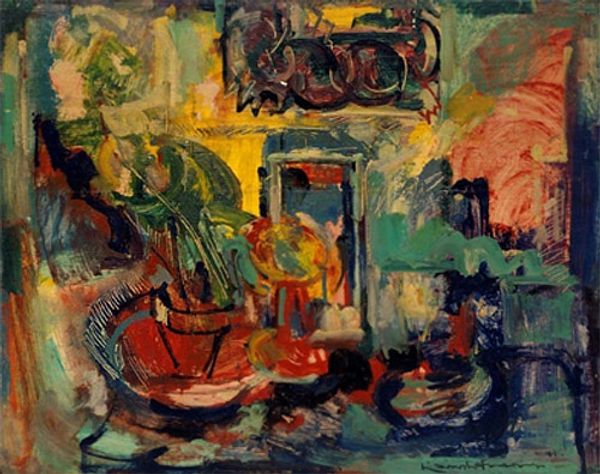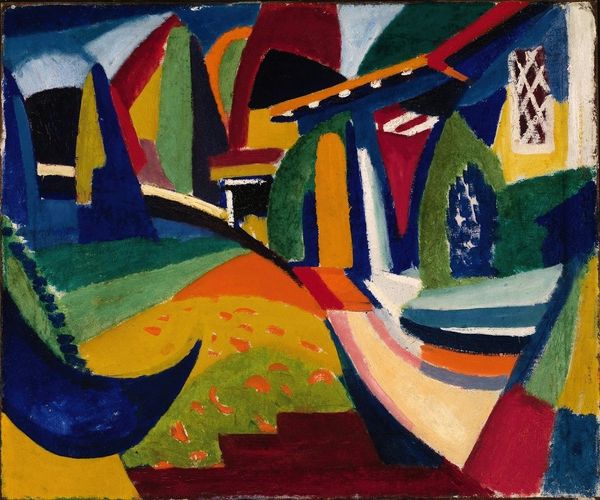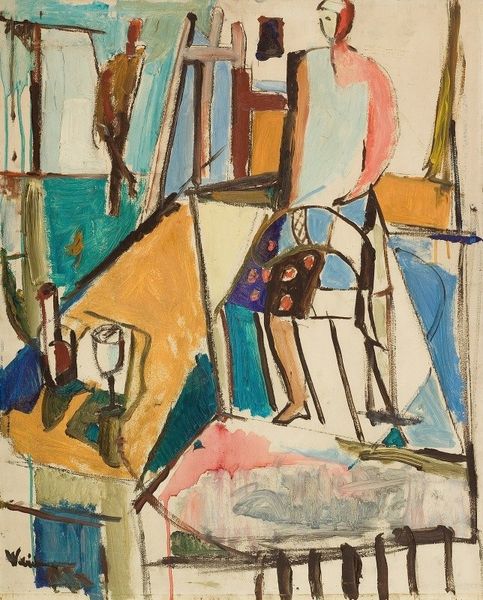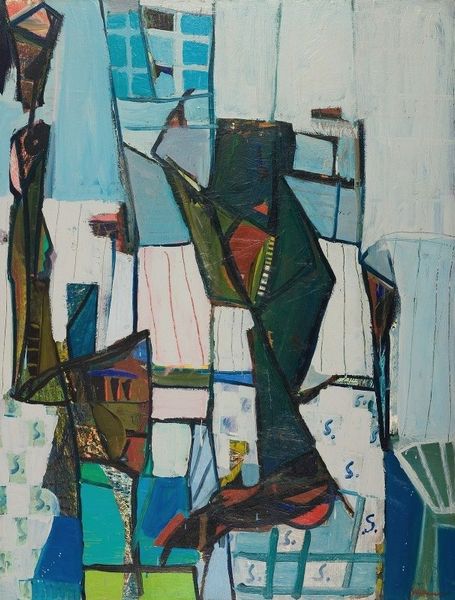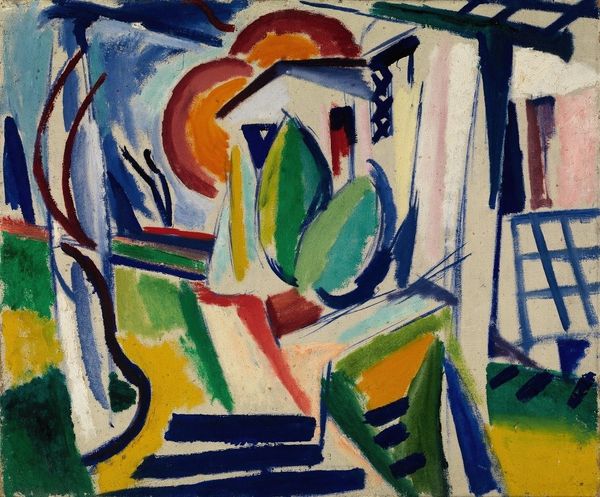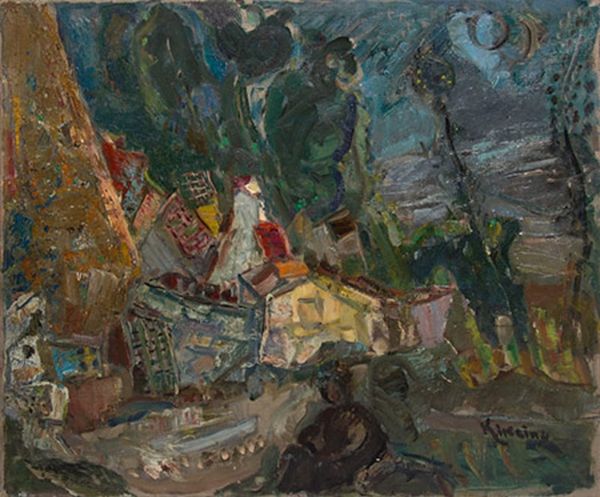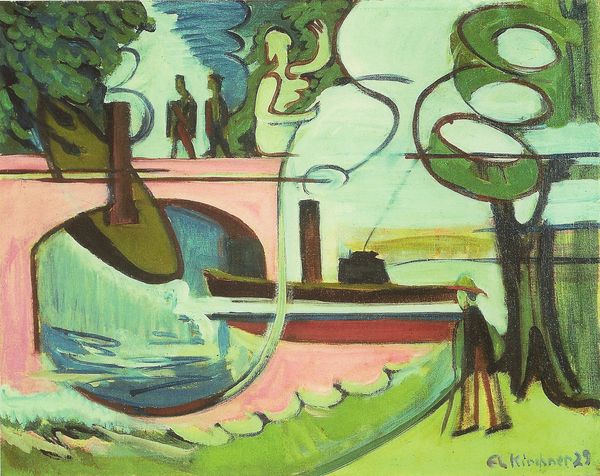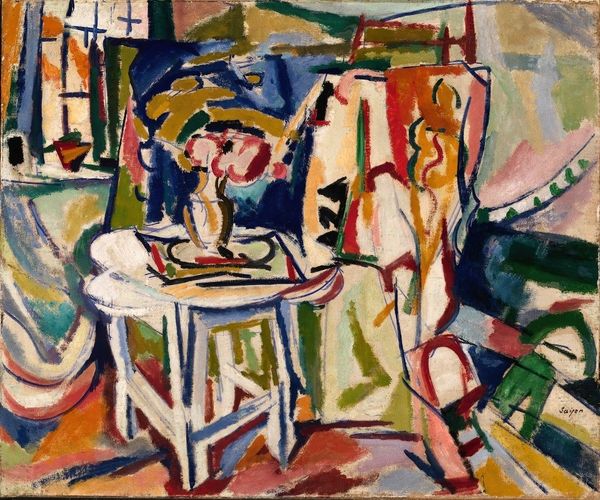
oil-paint, impasto
#
cubism
#
oil-paint
#
landscape
#
oil painting
#
impasto
#
abstraction
#
cityscape
Copyright: Public Domain: Artvee
Curator: This is Sasza Blonder's "Boats at Collioure," painted in 1944. It's an oil painting, rather heavily applied, giving it quite a tactile surface. Editor: The texture practically vibrates. I immediately get a sense of chaotic energy. It’s not tranquil like a typical harbor scene—there's a buzz, a layered clamor, both visual and perhaps imagined. Curator: Absolutely. Note how Blonder employs Cubist techniques. The picture plane is flattened, perspective is fractured, and the subject matter is deconstructed into geometric forms. Consider how the boats aren’t presented realistically, but rather as facets, volumes interlocked and overlapping. Editor: Right, instead of a realistic depiction, the artist offers up symbols. The boats, rendered in vivid blues, yellows, and reds, become almost totemic representations of seafaring life and, maybe more subtly, emblems of hope in the midst of wartime—considering it was painted in 1944. The ladder… perhaps it symbolizes aspirations? Curator: Perhaps. Or it could simply be a structural element, serving the compositional need for a vertical accent. The ladder's stark geometry contrasts nicely with the organic shapes elsewhere. Note the buildings in the background: boxy shapes, clearly delineating a townscape reduced to its most fundamental architecture. Editor: But within those fundamental shapes, there’s implied community and activity. Collioure is a town steeped in history. This harbors an entire civilization of sea-faring people. There are traces of ancient traditions, all evoked by Blonder's expressive palette. Curator: I find it intriguing how Blonder juxtaposes near-abstraction with identifiable elements. The impasto technique enlivens the scene, each dab of paint contributing to a dynamic surface. Editor: Indeed, a constant dance of image and feeling is going on here, and you're left contemplating both, aren't you? Curator: I think that tension between representation and abstraction encapsulates much of what's so captivating about Blonder's work here. Editor: For me, it underscores the deep, layered symbolism residing within a seemingly simple cityscape.
Comments
No comments
Be the first to comment and join the conversation on the ultimate creative platform.
